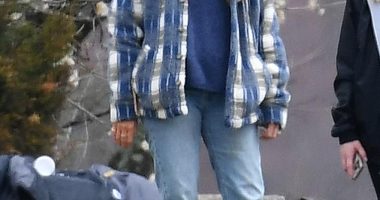Australians who work from home in white-collar jobs are missing out on decent pay rises, new SEEK data shows.
The bad news comes as unemployment in June stayed at a 48-year low of 3.5 per cent, with the Australian Bureau of Statistics on Thursday also revealing 32,600 jobs were created.
The historically low jobless rate isn’t translating into decent pay rises for everyone.
Matt Cowgill, a senior economist with the SEEK employment website, said white-collar professionals who worked from home had the weakest wages growth, even as demand for labour continued to surge this year.
‘If we look at the advertised salary data by industry, the slowest growth is in industries like advertising, arts and media, in the public sector, in consulting and strategy,’ he told Daily Mail Australia on Thursday.
‘These are white-collar professional industries where people generally are able to work from home, at least some of the time.’


Australians who work from home are missing out on decent pay rises with new data showing salary growth is likely to have peaked because of interest rate increases (pictured is a Sydney woman working remotely)
Advertised salaries on the SEEK employment website grew by 4.8 per cent in the year to April, but the marketing and communications sector pay levels went up by just 1.6 per cent.
Consulting and strategy was even worse with growth of just 1.4 per cent, while government jobs offered paltry pay rises of 1 per cent.
Advertised salary increases on the SEEK website appear to have peaked, slowing to 4.7 per cent in May and 4.5 per cent in June.
With inflation climbing by 5.6 per cent, workers are effectively suffering a cut in real wages.
The low jobless rate means the Reserve Bank of Australia is more likely to raise rates again, with incoming governor Michele Bullock last month warning it would make it harder to control inflation.
Read Related Also: LeBron James spotted for the first time after son Bronny, 18, suffered cardiac arrest
‘If unemployment remains too low for too long, inflation expectations will rise, which will make it that much harder for the monetary policy authorities to bring inflation back down,’ she told the Australian Industry Group in Newcastle.
‘There is a risk if inflation expectations get ingrained and wages respond to that and wage demands respond to that, we end up in a situation where inflation is very difficult to get down.’
Interest rate rises have also diminished the ability of employers to offer new staff bigger pay increases.
‘It looks that way, yes,’ Mr Cowgill said.
‘We saw really quite rapid advertised salary growth through 2022 and it has slowed down.’
But Mr Cowgill said it was still too early to predict retrenchments for white-collar workers as the economy slowed.
‘It’s all still so new, this sort of post-pandemic, work-from-home dynamic or hybrid-work dynamic that I don’t think anybody can be too confident in predicting how it will shake out,’ he said.


Unemployment in June stayed at a 48-year low of 3.5 per cent as 32,600 jobs were created, the Australian Bureau of Statistics revealed on Thursday (pictured is a Sydney barista)
‘This is still a really tight labour market, unemployment’s still in the mid three per cent, which we hadn’t seen a rate that low anytime from the mid-1970s until last year.’
Despite the slowdown, Mr Cowgill said switching jobs was still a better way to get a pay rise, with advertised salaries on SEEK growing at a much faster pace than the official 3.7 per cent wage price index.
‘The best way to get a pay rise is get a new job,’ he said.
‘When you’re in the same job for an extended period, there’s not necessarily, at least in some roles, renegotiations to reflect people’s extra accumulated skills and experience.
‘Maybe they get an annual bump that reflects inflation and the like, but when you go for a new job, that might better reflect the skills and experience you’ve accumulated.’
While unemployment remained low, the underemployment rate of 6.4 per cent, where staff want more hours, was 0.6 percentage points above the lows of last year.
ANZ head of economics Adam Boyton said this suggested jobs growth was slowing.
‘The slowdown in economic activity suggests employment growth and growth in hours worked should cool materially over the coming months,’ he said.


The low jobless rate means the RBA is more likely to raise rates again, with incoming governor Michele Bullock last month warning it would make it harder to control inflation
Mr Boyton said data on job ads and business confidence suggested ‘a drift higher in the unemployment rate over coming months’.
Mr Cowgill said while there was no evidence of a wage-price spiral, the unemployment rate would have to rise for inflation to fall back within the Reserve Bank’s two to three per cent target.
‘Nobody can tell you with a high degree of confidence whether that number is 4.5 per cent or 4 per cent or 5 per cent or something in that kind of range,’ he said.
‘I do think soon-to-be governor Bullock’s comments were fair in the sense that, I suspect, she’s probably right that if unemployment stayed at its current levels, in the mid-threes, for an extended period, that we would see wages growth pick up more than is currently expected and that might pick up to unsustainable levels.’
The June data covered the period before the minimum wage went up by 8.6 per cent on July 1 for 184,000 of Australia’s lowest-paid workers.
This occurred as award wages rose by 5.75 per cent for another 2.5 million employees.
Inflation data for the June quarter, due out on Wednesday next week, may give a better indication of whether the Reserve Bank increases rates again in August.








